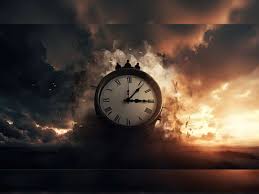Blood moon lunar eclipse: What is rare phenomenon and how to ...

Astronomers and amateur stargazers are preparing themselves for the first blood moon lunar eclipse of the year.
In around a month’s time, the moon will appear to turn red or orange in a surreal and spectacular sight. The incredible moment of the eclipse will arrive in the skies above the UK on March 14 - and the red glow will be visible for many.
Anyone considering watching the incredible moment will have two options - either staying up or setting an alarm and getting up early in the morning. Either way, the moon will first move into the Earth’s penumbra - the outer region of our planet’s shadow - at around 3.57am.


The maximum eclipse will be at 6.19am because the moon will have set below the horizon later on. Anyone wanting to get the best view will want to be at a high point with a view of the west.
The last blood moon was on October 28 in 2024. The moon appears bright in the sky because it is reflecting the sun’s light off its surface and back onto Earth. When it appears red, no sunlight is directly falling on the moon, but Earth’s sunrises and sunsets illuminate it, making it appear red to us under the blanket of our atmosphere.
NASA explains: “Sunlight bends and scatters as it passes through Earth’s atmosphere. In air, colours at the blue and violet end of the rainbow scatter more widely than colours like red and orange.
“Widely scattered blue light tints the sky when the sun is overhead on clear days. Redder light travels a straighter path through the air; we only see it scattered throughout the sky around sunrise and sunset, when sunlight has travelled through a thick slice of Earth’s atmosphere before reaching our eyes.
“During a lunar eclipse, some of this heavily filtered morning and evening light makes it all the way through Earth’s atmosphere and eventually reaches the lunar surface.
“The eclipsed Moon is dimly illuminated by red-orange light left over from all of the sunsets and sunrises occurring around the world at that time. The more dust or clouds in Earth’s atmosphere during the eclipse, the redder the Moon will appear.”


 United Kingdom
United Kingdom Argentina
Argentina  Australia
Australia  Austria
Austria  Brazil
Brazil  Canada
Canada  Germany
Germany  Ireland
Ireland  Italy
Italy  Malaysia
Malaysia  Mexico
Mexico  New Zealand
New Zealand  Poland
Poland  South Africa
South Africa  United States
United States 





















